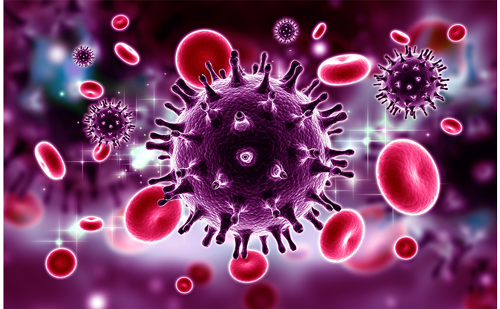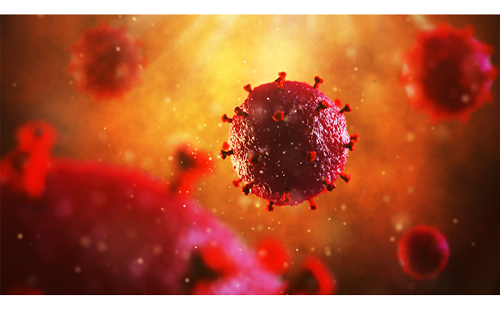The treatment of people with HIV (PWH)/hepatitis B virus (HBV) co-infection, especially those who have additional comorbidities requiring multiple drug therapies can be problematic. Bictegravir/emtricitabine/tenofovir alafenamide (BIC/FTC/TAF) is a co-formulated medication consisting of two components in a single tablet regimen: bictegravir (BIC), an integrase strand transfer inhibitor (INSTI); and emtricitabine (FTC) and tenofovir alafenamide (TAF), which are dual nucleos(t)ide reverse transcriptase inhibitors (NRTI). BIC/FTC/TAF is indicated for treating PWH who have no antiretroviral therapy (ART) history or to replace current therapy in those who are virologically suppressed on a stable regimen, with no history of treatment failure and no known resistance to the individual components of BIC/FTC/TAF.1 As it requires no testing for HLA-B*5701, it is suitable for rapid start therapy. National guidelines from the American Association for the Study of Liver Diseases recommend that PWH and HBV co-infection receive dual therapy with tenofovir disoproxil fumarate (TDF), or TAF plus lamivudine (3TC) or emtricitabine.2 BIC/TAF/FTC is an enticing option in transplant recipients and patients with cancer receiving immunosuppressive or cytotoxic chemotherapy at risk for HBV reactivation or disease, due to fewer drug interactions and a better safety profile than TDF-containing regimens.3–5 This review details a hypothetical patient case, based on an amalgamation of patients that have been evaluated at a National Cancer Institute designated cancer centre, which discusses the rationale for the use of BIC/FTC/TAF for PWH/HBV co-infection concomitantly being treated for an underlying malignancy. The purpose of this review is to highlight complications that may arise in these special situations to help others both anticipate and navigate difficulties that may develop, and to discuss the next steps in treatment and the rationale for those decisions.
Optimizing antiretroviral therapy for people with HIV/hepatitis B virus co-infection
For PWH/HBV co-infection, guidelines recommend using two antiretroviral drugs that have activity against HBV as part of the treatment.2,6,7 Monotherapy with 3TC or FTC is not recommended as resistance to HBV can develop.2,6 People with 3TC-resistant HBV will have cross resistance to other L-nucleosides, including FTC.8
TAF and TDF are effective against wild-type HBV and 3TC-resistant strains. Studies have shown that among people co-infected with HIV/HBV, including those who carry 3TC-resistant strains, treatment with TAF or TDF will result in significant decreases in HBV DNA levels.9–13 TAF was shown to be noninferior to TDF in patients with hepatitis B envelope antigen (HBeAg)-negative and HBeAg-positive chronic HBV infection, with the added benefit of improved bone and renal effects after 48 weeks of treatment.14,15 Additionally, TAF and TDF have a high genetic barrier for the development of HBV resistance mutations.2 The decision to use TAF as opposed to TDF should be based upon a patient’s underlying renal function, risk of developing nephrotoxicity and risk of bone loss. For people with a creatinine clearance ≥60 mL/min, either TAF or TDF can be used; however, for patients with a creatinine clearance 30–59 mL/min, TAF is the preferred agent.6
The use of BIC/FTC/TAF for adults with HIV/HBV co-infection is further substantiated by the ALLIANCE trial, a randomized clinical phase III trial that compared BIC/FTC/TAF with dolutegravir (DTG)/FTC/TDF as initial treatment for co-infected adults.16 BIC/FTC/TAF was noted to be noninferior at achieving undetectable HIV-1 levels and increasing CD4+ T cell counts, and was superior at achieving undetectable HBV DNA levels. Additionally, patients treated with BIC/FTC/TAF had higher hepatitis B surface antigen (HBsAg) and HBeAg loss, HBeAg seroconversion and ALT normalization compared with DTG/FTC/TDF.16
Bictegravir/emtricitabine/tenofovir alafenamide in people with HIV who have underlying genotypic resistance
Among INSTI-based regimens, BIC and DTG-containing regimens have a higher barrier to resistance compared with early generation INSTI-based medications, and may be used among PWH who have pre-existing INSTI and NRTI resistance mutations.17
In one study of individuals who had pre-existing INSTI resistance mutations with one primary INSTI-resistant substitution, including E92G, Y143C/H, S147G, Q148H/K/R, N155S or R263K, and some with secondary substitutions, 19 out of 20 individuals who were virologically suppressed successfully maintained virologic suppression when switched to BIC/FTC/TAF.18
Additionally, BIC/FTC/TAF has been shown to be effective in individuals with NRTI-resistance associated mutations. In a study of PWH, of whom almost half carried the M184V/I resistance mutation and 21 out of 29 had more than one NRTI-resistance associated mutation, 49 out of 50 PWH had undetectable viral loads after over 18 months on treatment with BIC/FTC/TAF.19 Other reviews of patients with underlying NRTI resistance, caused by the M184V/I mutation, have shown BIC/FTC/TAF to be effective.20,21 In individuals with M184V/I and tenofovir-resistant mutations, one study demonstrated no significant differences in efficacy comparing persons with and without NRTI resistance mutations.22 Efficacy was 86.0% in the subgroup of patients with M184V/I mutations and 96.7% in those with resistance to TAF.22 Of the nine patients with both M184V/I and tenofovir-resistant mutations, all had HIV-1 RNA levels undetectable at week 48.22 Therefore, BIC/FTC/TAF appears to be effective in maintaining HIV viral suppression with previously documented NRTI resistance without INSTI resistance.
Other treatment options for HIV/hepatitis B virus co-infection
A fully active ART regimen containing a combination of FTC/3TC plus tenofovir (TAF or TDF) remains the standard of care for HIV/HBV co-infection. However, treatment for HIV/HBV co-infection is more complicated when TAF, TDF, FTC or 3TC are not options due to renal issues or HBV drug resistance. Maintaining suppression of HIV-1 and HBV is important, and prescribing a regimen that is fully suppressive against HIV with alternative HBV treatments should be considered.
For patients who have drug-resistant or refractory HBV infection, studies are limited to determine best practice. In people with HBV, resistance against 3TC occurs the most frequently and develops in 60–70% of patients after 5 years of treatment with 3TC.23 Entecavir, an antiviral drug used to treat long-term HBV, has the lowest rates of resistance in NRTI-naïve patients, though resistance is more common among patients with 3TC-resistant infection and can emerge in people with 3TC-resistant HBV infection. For PWH, treatment with entecavir can also result in the selection of the M184V mutation, therefore, it should only be used in those on a fully suppressive HIV regimen.2,24 However, entecavir can be used in people with renal impairment, and may be considered for PWH as an alternative therapy to TAF or TDF while maintaining full HIV-1 suppression.
However, management of refractory HBV in PWH receiving FTC or 3TC plus TAF or TDF remains unknown. The most potent combination treatment for drug-resistant HBV infection has been thought to be tenofovir (TAF or TDF) with entecavir.25 Combination therapy with TDF and entecavir was shown to be superior to 3TC or telbivudine with adefovir in patients with 3TC-resistant HBV;26 however, this study was limited as it did not compare TDF monotherapy with TDF plus entecavir. Results from a number of studies have shown no difference in HBV complete virologic response between TDF monotherapy compared with TDF plus entecavir combination therapy among those with a history of lack of response or resistance to various HBV therapies.27,28 Another study also noted that renal function and bone mineral density were significantly decreased after 240 weeks among those treated with TDF.29 TAF in lieu of TDF would have minimized toxicities, though it is unknown if the findings regarding the efficacy against HBV would have been different. The effect of the addition of entecavir into HBV backbone therapy in difficult-to-treat or refractory cases remains unknown; however, triple therapy may be a reasonable approach in those cases. More studies are needed to understand the safety and efficacy of entecavir as an alternative agent to HBV backbone therapy in co-infected patients.
Another treatment option for drug-resistant or refractory HBV is pegylated interferon alpha monotherapy, as interferon does not appear to be associated with resistance, though data are limited.30,31 One study looked at the addition of pegylated interferon to the treatment plan of PWH/HBV co-infection on TDF/FTC or 3TC for at least 48 weeks.32 The study demonstrated that pegylated interferon did not significantly increase HBe seroconversion rate.32 A randomized study that compared pegylated interferon monotherapy with entecavir plus pegylated interferon showed there was no added benefit to combination therapy.33 However, another study that compared pegylated interferon monotherapy with combination with entecavir for patients positive for HBeAg did show that the addition of entecavir resulted in more viral decline and may help prevent relapse.34 It is unknown, however, if combination therapy may be of use in people with drug-resistant HBV infection.
The most advanced investigational drugs in development against hepatitis B currently undergoing trials include entry inhibitors, RNA interference agents, HBsAg assembly agents, capsid assembly modulators and immunomodulatory approaches.35 Several new NRTIs are also in development, including besifovir, which is currently undergoing phase III trials to assess its activity against HBV.36 A study has been conducted that looked at the susceptibility of besifovir in HBV strains resistant to 3TC, adefovir, entecavir or TDF.37 Findings in one study showed that 3TC-resistant mutants were not susceptible to besifovir, and entecavir-resistant clones showed partial resistance against besifovir.37 However, adefovir-resistant mutants were sensitive to besifovir, and those clones harboring resistance mutations to tenofovir were susceptible to besifovir. Therefore, besifovir may be an alternative for patients with adefovir, entecavir or tenofovir resistance.
Adefovir and telbivudine are not recommended for HIV/HBV co-infection due to high treatment failure and increased risk of toxicity.2,6 Adefovir is associated with renal disease and has no activity against HIV; telbivudine is associated with myopathy and neuropathy and is associated with selecting for the M204I mutation in the tyrosine-methionine-aspartate-aspartate (YMDD) motif.2,6
Drug interactions in the cancer and/or transplant populations
Patients with cancer and those who are transplant recipients receive therapeutics that can be problematic for PWH, such as when their ART cannot be used in combination with chemotherapy, anti-rejection or immunosuppressive medications. Ideally, ART regimens should be modified to avoid significant drug–drug interactions to ensure these patients are optimally treated for their respective cancer or organ dysfunction.38 An example of this modification was described in a case report where there was an expected drug interaction between tacrolimus and a boosted protease inhibitor (PI) in a transplant recipient.38 Though tacrolimus dosing was adjusted to account for the anticipated pharmacokinetic reactions, a tacrolimus overdose occurred. The case report highlighted the importance of not allowing a sufficient timeframe of withdrawal of a PI when drug interactions are expected. Another case report described the use of ibalizumab-uiyk as bridge therapy for a patient with drug-resistant HIV-1 infection.39 For this patient, ibalizumab-uiyk was used during chemotherapy as an alternative to their boosted PI regimen to avoid major drug interactions.
Foreseeable predicaments, such as drug interactions and adverse reactions in patients with cancer and/or undergoing transplant, make INSTI-based regimens an attractive alternative to PI and non-nucleoside reverse transcriptase inhibitors (NNRTIs).
The use of antifungal medications required for treatment and/or prophylaxis among cancer patients and transplant recipients can also have clinically relevant drug interactions with ART.40 Isavuconazonium cannot be used among patients treated with boosted PIs as its use is contraindicated with strong CYP3A4 inhibitors.41 Posaconazole has major drug interactions with drugs metabolized through CYP3A4, including boosted PIs and efavirenz. Voriconazole is also contraindicated with efavirenz and ritonavir due to the risk of loss of efficacy.42 Fluconazole has a relatively weak interactive potential with the CYP450 system and therefore may be used with these agents. Patients treated with tenofovir and amphotericin B should be closely monitored for renal dysfunction.43 For all patients who are taking ART, drug interactions should be reviewed before initiating new medications, and modifications of ART may be required to ensure the best care is received.
Recommendations for optimal therapy for PWH/HBV co-infection are unknown, particularly those with underlying malignancies that are treated with cytotoxic chemotherapy, immunotherapy or transplantation. Drug interactions that may occur between ART and cancer therapies may impact the best choice for ART. Prospective trials are needed to help create guideline recommendations for this unique population.
A hypothetical case study of a patient with HIV/hepatitis B virus co-infection with diffuse large B-cell lymphoma
This case study details a hypothetical case of a patient with HIV/HBV co-infection and is based on an amalgamation of patients that have been evaluated at a National Cancer Institute designated cancer centre. The purpose of this case study is to highlight special situations that frequently arise when treating a patient with HIV/HBV co-infection and cancer who requires a haematological stem cell transplant, and how to manage those cases.
A 25-year-old man presented to the emergency department with a two-month history of progressive right upper quadrant pain. Ultrasound imaging revealed a large hepatic lesion, which was biopsied and diagnostic of diffuse large B-cell lymphoma (DLBCL). HIV testing was positive, with a CD4+ T cell count of 150 cells/µL and an HIV-1 RNA level of 150,000 copies/mL. HBV testing showed HBsAg was positive at 30,500 IU/mL, HBeAg was positive and HBV DNA level was 2,550,000 copies/mL. A genotypic resistance assay for HIV was performed. The haematology team planned to initiate chemotherapy with rituximab, cyclophosphamide, doxorubicin hydrochloride, vincristine and prednisone (R-CHOP). The infectious disease team was consulted for the treatment of the HIV/HBV co-infection.
For the patient in this hypothetical case study, baseline laboratory data was collected, including checking a HIV genotypic resistance assay, and he was started on upfront treatment with ART.
Treatment considerations
Initiating ART as soon as possible is recommended for PWH, especially those who have AIDS-defining conditions.6,7 As our hypothetical patient had DLBCL involving the liver, and was initiating chemotherapy that has the potential for renal and hepatic toxicities, FTC/TAF was the preferred backbone therapeutic for the HIV/HBV co-infection. Furthermore, patients with haematologic malignancies may receive additional treatments that may pose issues with drug interactions in the future. PI and NNRTI-containing or boosting agent regimens are particularly problematic due to major drug interactions that can compromise the efficacy and toxicity of chemotherapy and/or ART. As the HIV-1 RNA level of the hypothetical patient was >100,000 copies/mL, a rilpivirine-based regimen was not recommended.6 Abacavir is also not recommended as initial therapy as we do not yet have testing for the HLA-B*5701 allele, along with its association with cardiovascular disease. Additionally, dolutegravir/lamivudine (DTG/3TC) was not a treatment option, as monotherapy with 3TC for HBV is not recommended.6,7
Another reason to select an INSTI-containing regimen is that data have shown that INSTIs provide either similar or superior immunological and virologic responses compared with present-day NNRTIs or PIs.44–49 Current federally-approved clinical practice guidelines and guidelines from the International Antiviral Society (USA panel) recommend initiation of INSTI-based regimens, and among the three preferred options, our hypothetical patient could have either started BIC/TAF/FTC or DTG/TAF/FTC.6,7 Before genotypic testing results were available, the hypothetical patient started BIC/TAF/FTC, and for prophylaxis against Pneumocystis jirovecii and toxoplasmosis he also received trimethoprim/sulfamethoxazole.
Upfront treatment with BIC/FTC/TAF has been used successfully prior to obtaining resistance test results.6 The FAST study was a prospective single-arm study to assess the efficacy, safety and feasibility of BIC/FTC/TAF to be started on the first medical appointment for individuals with newly-diagnosed HIV, with the rationale that starting therapy reduces secondary HIV transmissions and the risk of loss to follow-up.50 BIC/FTC/TAF was well tolerated with no emergent resistance-associated mutations and few adverse events, and therefore considered to be acceptable for same day initiation.50
Our hypothetical patient started chemotherapy with R-CHOP, with his course complicated by culture-negative febrile neutropenia. After 3 weeks, HIV-1 genotypic testing showed an NRTI resistance mutation (M184V/I) (associated with FTC and 3TC resistance) and an NNRTI resistance mutation (K103N). For our hypothetical patient with M184V/I and K103N mutations, BIC/FTC/TAF should have been effective, and based on the available literature, we decided to continue therapy.
Treatment course
Six weeks after initiating ART and chemotherapy, the hypothetical patient’s liver function enzymes increased to over 10 times the upper limit of normal. The patient was hospitalized, and testing revealed their HIV-1 RNA level had decreased to 1,300 copies/mL, their HBV DNA level had decreased to 400,000 copies/mL and HBsAg level remained stable. The hypothetical patient’s CD4+ T cell count remained low at 75 cells/µL as he was receiving chemotherapy and had completed two cycles of R-CHOP. Viral testing for hepatitis A, hepatitis C, hepatitis delta, hepatitis E, Epstein–Barr virus and cytomegalovirus were negative, and autoimmune testing was unremarkable. A liver biopsy showed chronic inflammation with lymphocyte infiltration and areas of focal fibrosis. No evidence of drug toxicity or lymphoma were detected, and immunohistochemical staining for hepatitis B core antigen (HBcAg) and HBsAg was positive. As his acute hepatitis was thought to be due to a HBV immune reconstitution inflammatory syndrome flare, ART was continued and liver function enzyme testing decreased over the next several weeks.
In PWH and HBV, cases of immune reconstitution inflammatory syndrome with hepatitis have occurred with FTC/TAF after initiation of ART.51 In fact, BIC/FTC/TAF carries a black box warning of post-treatment acute exacerbation of HBV, which may occur with stopping the medication. As such, it is recommended that people co-infected with HIV/HBV continue therapy indefinitely due to HBV flares and potential decompensated liver disease.52–55 This is especially true for our hypothetical patient, who was being treated with rituximab, an anti-CD20 agent. Reactivation of HBV has been well described with the use of rituximab, and it is recommended that patients who receive this medication be maintained on HBV treatment for a minimum 12 months after anti-CD20 therapy completion.56
Follow-up on our patient
Our hypothetical patient continued BIC/FTC/TAF throughout the treatment for the lymphoma diagnosis, and 3 months after initiating treatment, the patient’s CD4+ T cell count remained low (125 cells/µL), likely due to the chemotherapy regimen, the HIV-1 RNA level became undetectable (<20 copies/mL), as did the HBV DNA level. The hypothetical patient remained on trimethoprim/sulfamethoxazole for prophylaxis.
After completion of R-CHOP, a follow-up positron emission tomography and computed tomography (PET-CT) scan continued to show evidence of DLBCL; therefore, the patient received five cycles of brentuximab, and subsequently achieved complete remission by PET/CT and bone marrow biopsy. The hypothetical patient subsequently underwent autologous haematopoietic stem cell transplant with BCNU, etoposide, Ara-C and melphalan (BEAM) conditioning chemotherapy (carmustine, etoposide, cytarabine and melphalan) without any complications. When assessed at 3 years post treatment, the hypothetical patient remained in remission from DLBCL, with CD4+ T cells ranging between 400 cells/µL and 600 cells/µL, and HIV-1 RNA levels undetectable at <20 copies/mL. The liver tests were normal, and he was deemed both HBsAg and HBeAg negative.
Conclusions
BIC/FTC/TAF is a first-line treatment for HIV-1 for adults, adolescents, and children ≥2 years of age and weighing ≥14 kg that has activity against HIV/HBV for co-infected individuals. It is effective, well tolerated, has a high barrier to resistance and is now considered a first-line therapeutic for HIV by the US Department of Health and Human Services and International Antiviral Society (USA panel).6,7,57 This combination therapy has few drug interactions, making it a useful treatment option for people with other underlying medical conditions that require multiple drug treatments, such as cancer and organ transplantation. BIC/FTC/TAF is a useful medication in the armamentarium of therapies for PWH/HBV co-infection and should be considered in treatment-naïve and treatment-experienced populations. Future prospective trials would be helpful in guiding best treatment options for PWH and HBV co-infection undergoing treatment for cancer.













